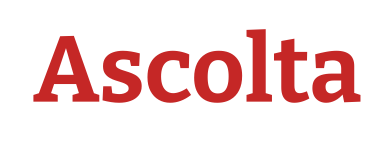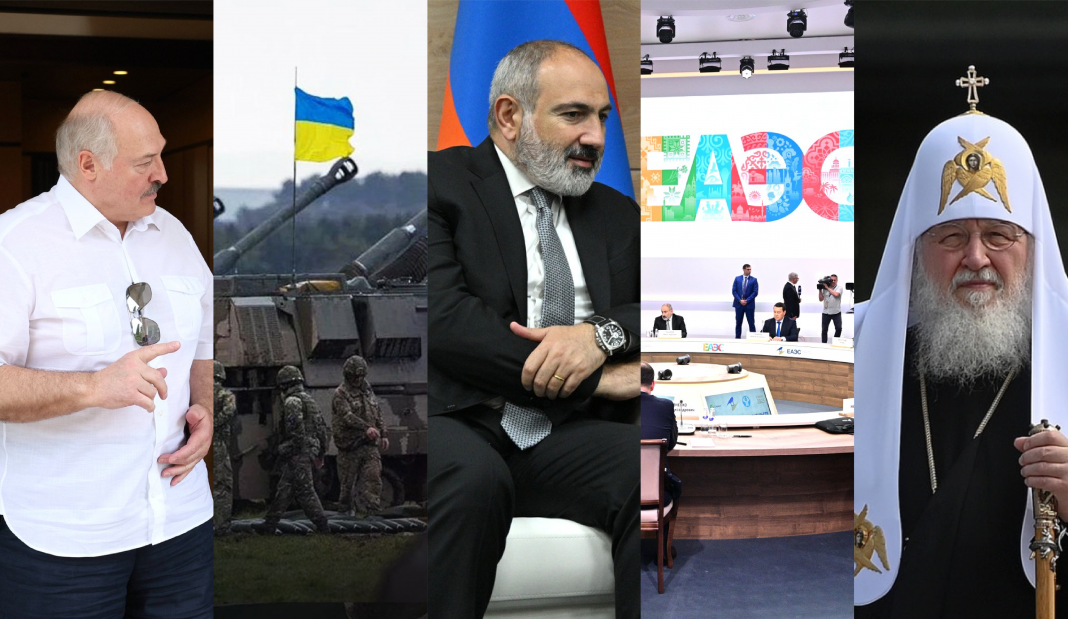This report describes the key events that significantly impacted Russia’s political, economic and social processes.
Based on the results of the past week, the following trends can be summarised:
- There is a severe increase in rates in the Ukrainian issue. The breach of the Kakhovskaya hydroelectric dam, which led to an exchange of accusations on both sides, appears to be only part of a more significant change that will take place soon. First of all, we are talking about the safety of the functioning of the Zaporizhzhia nuclear power plant, as well as possible threats in connection with a man-made disaster in the flooded areas. In the near future, several statements and initiatives are expected to be published, which will demonstrate the positions of the parties and their readiness for further escalation or de-escalation of the conflict.
- Putin demonstrates serious efforts to strengthen economic and political relations with key allies. At the same time, the chairmanship of the EAEU and preparations for the chairmanship of the CIS, scheduled for 2024, provide an opportunity to try to demonstrate Russia’s leadership position at the regional level. At the same time, Russia is experiencing a positioning crisis with allies such as China and India. This situation is forcing Moscow to offer concessions and preferences for regional players to build a reliable system of relationships.
- Russia has noticeably become more active in the information space. Gradually taking away the Ukrainian side’s initiative in launching a counteroffensive, Russian propaganda managed to build its own information agenda, skillfully using situational victories at the front. At the same time, by the end of the week, the Armed Forces of Ukraine managed to change this state of affairs by regaining control over several occupied settlements. Apparently, shortly, we should expect an increase in precisely the information war.
This digest describes the issues, being the most relevant for Russia from 29 May to 04 June:
1. The situation with the destruction of the Kakhovka hydroelectric power station;
2. Meeting of Vladimir Putin with Alexander Lukashenko;
3. Vladimir Putin’s meeting with the heads of government of the CIS and EAEU states;
4. Meeting of Vladimir Putin with the Prime Minister of Armenia Nikol Pashinyan;
5. Putin’s answer to a question about the situation in the war zone on the territory of Ukraine;
6. Interview of Sergei Lavrov for the magazine “International Affairs”;
7. Ukrainian “Counteroffensive”;
8. Undermining the ammonia pipeline Togliatti-Odesa;
9. Transfer of Ukrainian prisoners of war to Hungary with the assistance of the Russian Orthodox Church;
10. Order of Sergei Shoigu for all the Russian volunteer battalions on signing contracts with the Ministry of Defense.
This Content Is Only For Subscribers
- The situation with the destruction of the Kakhovka hydroelectric power station
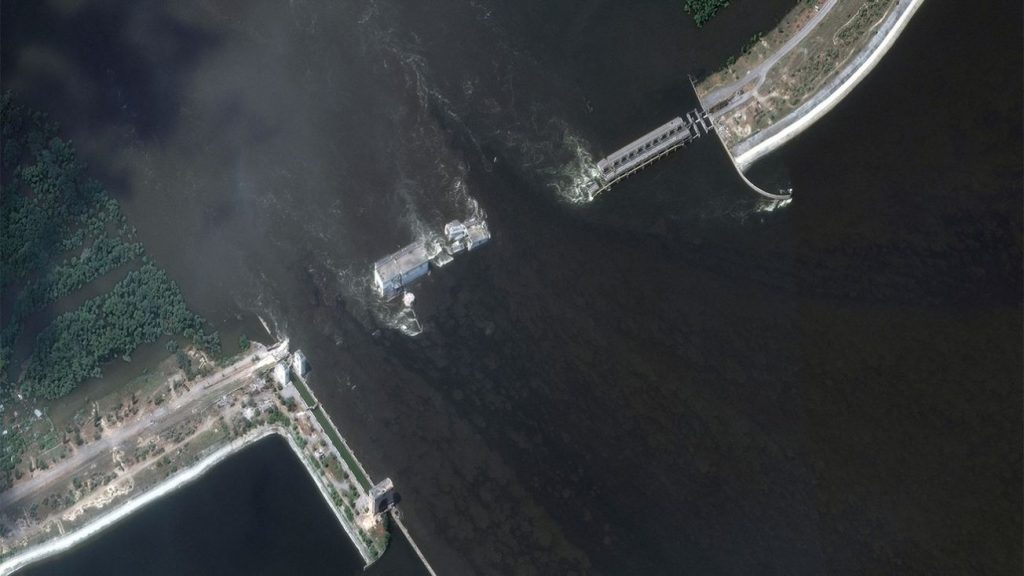
On Tuesday, June 6, the operational command “South” of the Armed Forces of Ukraine published a statement about the Russian side undermining the Kakhovka hydroelectric power station. According to the report, the explosion occurred at about 4 am. After some time, video evidence of the dam’s destruction began to appear massively on the network, and downstream settlements began to flood due to a sharp rise in water. This situation has led to a real ecocide in the southern regions of Ukraine. Dozens of settlements were underwater. Thousands of hectares of fertile land were also damaged. A severe threat remains for the Zaporizhzhya nuclear power plant, which could be left without a critical water supply for cooling the reactors. Also questionable is the supply of water to the Crimea.
Timeline:
- The Russian-appointed “authorities of Novaya Kakhovka” declared that only the upper part of the dam of the Kakhovskaya hydroelectric power station, the so-called shandors or gate valves, had been destroyed.
- The head of the Kherson regional council said that the peak of flooding after the destruction of the Kakhovka dam is expected by 11:00 Kyiv time.
- The water level in the Dnieper, upstream of the Kakhovka HPP, began to decline at a rate of 15 cm per hour.
- The Ukrainian state company Energoatom said that the decline in the water level in the Dnieper, which began in the Zaporizhzhia Oblast, could have negative consequences for the Zaporizhzhia NPP.
- The Ukrainian state-owned company Ukrhydroenergo stated, “Kakhovka HPP is completely destroyed; it is impossible to restore it”.
- Representatives of the “authorities” of the temporarily occupied territory of the Kherson Oblast stated that the Armed Forces of Ukraine struck the reason for the breakthrough of the dam of the Kakhovka HPP. At the same time, some Russian speakers put forward a version that the dam collapsed under the influence of earlier damage.
- The “head” of the temporarily occupied Crimea, Sergei Aksionov, spoke about the threat of the North Crimean Canal becoming shallow: “There is a risk that the North Crimean Canal will become shallow. Currently, the canal’s water reserves are about 40 million cubic meters. Even those previously filled by 15-20%, reservoirs currently have about 80% of filling. Drinking water is more than enough. Work is underway to minimise water losses in the canal.”
- BILD military observer Yulian Röpke Podryv said that the breach of the dam of the Kakhovka HPP makes it impossible for the Armed Forces of Ukraine to cross the Dnipro river in the next few weeks.
- Limits on water consumption for the population and industry were introduced in Kryvyy Rih.
- Zelensky led the National Security and Defense Council to destroy the dam of the Kakhovka HPP. According to an official statement, 80 settlements were at risk of flooding.
- Vladimir Rogov, a representative of the “administration” of the temporarily occupied territory of the Zaporizhzhia Oblast, announced the start of the evacuation from the left bank of the Dnieper: “There is a threat of catastrophic flooding of the territories of Novokahovsky, Golopristansky, Oleshkivsky districts. The population must collect the necessary personal belongings, documents, food for three days, drinking water, turn off gas and water.”
- The IAEA Board of Governors held an urgent meeting concerning the breach of the dam of the Kakhovka HPP. The head of the IAEA, Rafael Grossi, said that the water level in the reservoir used to cool the Zaporizhzhia nuclear power plant had seriously fallen. According to him, the prolonged absence of water for cooling at the ZNPP will disrupt the operation of emergency diesel generators.
- Putin’s spokesman Dmitry Peskov accused Ukraine of blowing up the Kakhovskaya hydroelectric power station: “We strongly reject the accusation of blowing up the dam of the Kakhovka HPP. It was a deliberate sabotage of Kyiv. One of its goals is to deprive Crimea of water; the supply of water to the North Crimean Canal is being reduced.” He also linked the alleged blowing up of the dam by Ukraine with the fact that “the Armed Forces of Ukraine, which launched large-scale offensive operations two days ago, do not achieve their goals, these offensive operations are choking.”
- Volodymyr Zelensky refuted Russia’s claims that the Kakhovka HPP dam was blown up by the Ukrainian side: “For more than a year, Russia has controlled both the dam and the entire Kakhovka HPP. To blow it up somehow from the outside – by shelling – is physically unrealistic. She was mined. It was mined by the Russian invaders and blown up by them.”
- Russian Defense Minister Sergei Shoigu made accusations against Ukraine. According to him, in this way, Kyiv allegedly “seeks to prevent the Russian army from advancing on this sector of the front.”
- Reuters, citing its own sources, said that the administration of US President Joe Biden is very concerned about reports of the destruction of the Kakhovka hydroelectric dam and is trying to find out the potential consequences of the incident.
- Italian military expert Thomas Teiner, in a comment to Bild, said that the Armed Forces of Ukraine were preparing an operation to seize the Kakhovka HPP. According to him, Ukraine has prepared “an operation involving special forces, paratroopers, marines, boats and helicopters to take the dam.”
- Volodymyr Zelensky said that the consequences of the Kakhovka HPP dam failure would be clear in a week: “The consequences of the tragedy will be clear in about a week. In simple terms, when the water leaves… We understand that 35 to 70 settlements will be flooded, and there will be big problems in the drinking water supply. There will be big problems with drinking water, even when not flooded. All over the region: in Dnepropetrovsk, Zaporizhzhia and Kherson, of course.”
- UN Secretary-General António Guterres said that at least 16,000 people lost their homes after the destruction of the Kakhovka hydroelectric dam. He added that the world organisation, partners, and the government of Ukraine are sending humanitarian aid to the affected areas, “including drinking water and water purification tablets.”
- In an interview with Forbes, the head of Ukrhydroenergo, Igor Sirota, said that the Kakhovka reservoir would be worked out to the “dead point” in about four days. He also noted that the restoration of the Kakhovka HPP will cost $1 billion and last five years.
- John Kirby, strategic communications coordinator at the White House National Security Council, said that the US is closely monitoring the situation around the Kakhovka HPP but cannot confirm Russia’s involvement in the incident. Also, according to him, the United States believes that the destruction of the Kakhovka hydroelectric power station could have devastating consequences for the energy sector of Ukraine.
- On the night of June 7, a meeting of the UN Security Council was held, during which the Permanent Representative of Ukraine to the UN, Serhiy Kyslytsya, blamed Russia and called the incident a “large-scale environmental terrorist attack”, which became the largest man-made disaster in Europe in recent decades. In response, Russia’s Permanent Representative Vasily Nebenzya accused Ukraine of deliberately blowing up the dam, allegedly to divert attention from the regrouping of troops and harm the residents of the areas adjacent to the hydroelectric power station.
- The Permanent Representative of the People’s Republic of China to the UN Zhang Jun, at a meeting of the Security Council, called to prevent a nuclear catastrophe at the Zaporizhzhia NPP due to the destruction of the dam of the Kakhovka HPP and to refrain from statements and actions that could lead to escalation: “The water in the reservoir continues to decrease, and in the future, there may be a situation where it will be impossible to continue pumping water for nuclear power plants. China reiterates that in the event of a nuclear catastrophe, no one can be safe.”
- On Wednesday, June 7, British Prime Minister Rishi Sunak said it is too early to draw final conclusions about who destroyed the Kakhovka hydroelectric dam. Although he announced a “new level of Russian aggression”: “Our military and intelligence services are now carefully studying this incident. If this is a deliberate attack, it will be the largest attack on civilian infrastructure in Ukraine since the start of the war and demonstrate a new level of Russian aggression. Attacks on civilian infrastructure are horrendous and wrong. We have already seen similar cases in the course of the conflict. But it is too early to draw final conclusions.”
- Rafael Grossi said that the IAEA would strengthen its mission next week at the seized Zaporizhzhia nuclear power plant after destroying the dam of the Kakhovka HPP.
- Volodymyr Zelensky, in an interview with Bild, said he was shocked by the reaction of the UN and the Red Cross to the breakthrough of the dam of the Kakhovka HPP. According to him, the largest international organisations either did not give a response to the request for assistance, or it was, in fact, a refusal “in diplomatic language.” The President of Ukraine said that he was “shocked” by such a reaction. Also, in this interview, Zelensky noted that Ukraine currently does not have evidence of Moscow’s involvement in the disaster at the Kakhovka HPP: “What evidence can we have? When we get there, we will collect evidence.”
- Ivan Samoydyuk, First Deputy Mayor of Energodar, said in a commentary to Radio Liberty that the situation at ZNPP could get out of control and become critical at any moment. He also urged the residents of Energodar to be ready for a quick evacuation.
- Belarusian President Alexander Lukashenko accused Ukraine of blowing up the Kakhovka hydroelectric power station dam: “You can probably guess who blew up the Kakhovka hydroelectric power station. They say a thief’s hat is on fire. Who was the first to shout about it? “It is clear that the Ukrainian side had to hide the three days of the “counterattack”, where almost two hundred armoured vehicles were destroyed, and more than 2 thousand people died. Therefore – Kakhovka, Kakhovka, but no one talks about that. And you can see it all.”
- On Thursday, June 8, Volodymyr Zelenskyy visited Kherson and supervised the evacuation of citizens from the city’s flooded areas. At the same time, Sergey Kiriyenko, First Deputy Head of the Presidential Administration of the Russian Federation, arrived on the left bank of the Kherson region occupied by the Russians.
- Toward evening, the head of Ukrhydroenergo, Igor Syrota, said that the water in the Kakhovka reservoir had crossed the “dead point”, and water intake was no longer possible: “The level is already 12.5 m. This is below the “dead” point of 12.7 m when we can take water to settlements and for Zaporizhzhia NPP.”
- On Friday, June 9, Jeremy Lawrence, spokesman for the Office of the UN High Commissioner for Human Rights, said that the UN considers the reason for the destruction of the Kakhovka HPP dam to be “too unclear”: “The circumstances that led to the destruction of the Kakhovka HPP are still too unclear, To qualify this incident as a war crime, an independent investigation must be carried out.”
- The New York Times, citing its own sources, reported that US satellites recorded an explosion at the Kakhovka HPP before its destruction. According to the publication, citing a Biden administration official, satellites equipped with infrared sensors detected signs of heat consistent with a strong explosion just before the collapse of the dam.
- The State Nuclear Regulatory Inspectorate of Ukraine has decided to transfer the last power unit of the Zaporizhzhia NPP to a “cold shutdown” mode due to a drop in the water level in the Kakhovka reservoir.
- The UN responded to the accusations of the Ukrainian president: “The organisation has been present in Ukraine” since the beginning of the conflict “and provides humanitarian assistance to the victims, but does not “physically save” people.”
- Russia has notified the IAEA that a distributor at Zaporizhzhia TPP, previously used to provide backup power at Zaporizhzhia NPP, was hit by kamikaze drones.
- On Saturday, June 10, Ukrhydroenergo announced that more than a third of the water had been lost from the Kakhovka reservoir. The reservoir level in the Nikopol area is 10.55 meters. Which is almost 1.2 meters lower than the previous day.
- The Verkhovna Rada of Ukraine adopted an appeal to the UN and its member states, in which it officially accused Russia of blowing up the Kakhovka hydroelectric power station.
Outcomes and outlook:
The situation around the Kakhovka HPP can serve as the beginning of more global processes, which, in turn, can develop according to several scenarios at once. Almost a week after the Kakhovka HPP dam burst, when the water had already begun to drain from the settlements, and the leadership of the affected regions was calculating the losses from the man-made disaster and fixing the consequences for the environment and the economy, several important aspects are worth paying attention to.
First, the reaction of international organisations and several Western states was very ambiguous. Almost simultaneously in Washington and London, they announced the need to obtain reliable data, although they hinted that they were inclined to the version of Russia’s involvement. The UN and the OSCE took a neutral position. Very fair is Zelensky’s statement that not a single Western state has offered direct assistance in combating the consequences of the disaster.
The largest man-made disaster in Europe for several decades turned out to be practically unnoticed by the world community. One gets the impression that at the geopolitical level, either they had been preparing for such a scenario for a long time, or they turned out to be so unprepared for it that they could not form their position even a week after the breakthrough of the hydroelectric power station. This factor is indicative since Moscow can use it as a demonstration of the lack of a unified position on the part of the West.
Secondly, the most discussed aspect of the Kakhovka hydroelectric dam failure is the possible consequences for Europe’s largest Zaporizhzhia nuclear power plant. In the first hours after the dam burst, a meeting of the IAEA was convened to discuss the risks for the further operation of the station. Also, throughout the week, there were mixed forecasts about threats to cooling tanks, which could lead to severe accidents at the ZNPP. Soon, we should expect a public formation of the idea of the need to cease hostilities, at least in the ZNPP area, in order to prevent a more global catastrophe. This idea can serve to intensify anti-war rallies in several Western states. It is possible that this idea can be used by the Russian side as well.
Thirdly, the lack of a clear position in the West on accusing Russia of undermining the dam of the Kakhovka HPP causes an ambiguous reaction in further investigating the situation. Of course, it is worth considering both sides’ statements, in which the breach of the dam is associated with the start of the Ukrainian counteroffensive. At the same time, the Ukrainian side claims that by blowing up the dam, Russia made it virtually impossible for the Armed Forces to attack the territory along the Dnieper, thereby significantly narrowing the line of defence. At the same time, the Russian side claims that the territories it occupied suffered more from the rise of water, and the lines of defence were actually washed away by the current. At the same time, the question arises whether any of the parties were really ready to provoke a man-made disaster of such magnitude to correct defensive or offensive actions.
It is worth recognising that shortly, one can hardly expect an objective investigation of the breakthrough of the dam of the Kakhovka HPP, with the involvement of the international community. First, hostilities greatly complicate this process. Secondly, almost a week after the disaster, there was still no consolidated proposal to conduct an independent investigation. At the same time, we can definitely state that we will see all the future political, economic and environmental consequences.
- Meeting of Vladimir Putin with Alexander Lukashenko
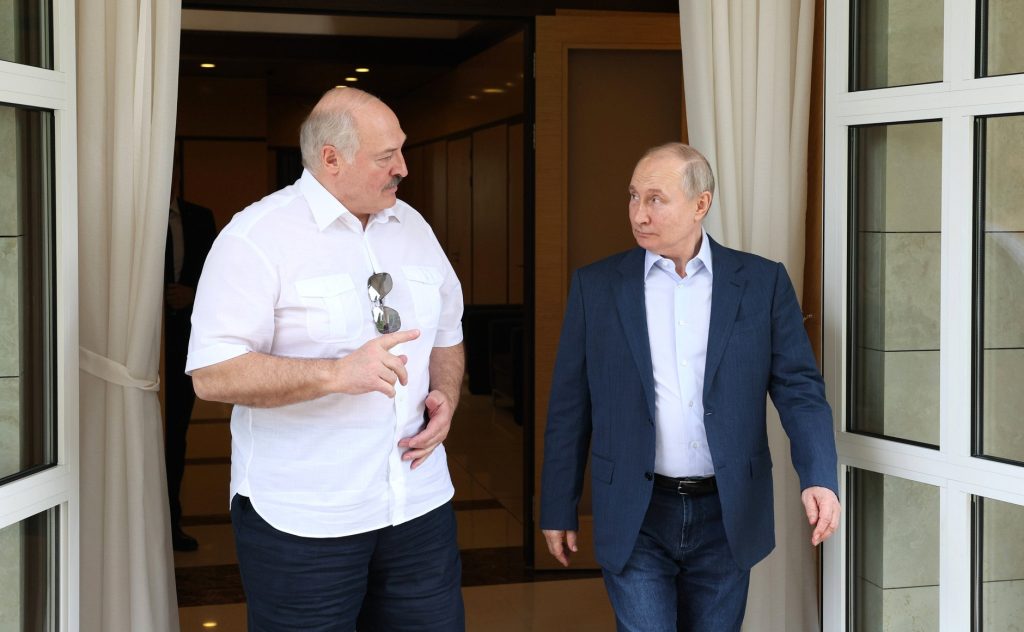
On Friday, June 9, in Sochi, at the Bocharov Ruchey residence, Vladimir Putin met with President of Belarus Alexander Lukashenko. The meeting was held in an informal format. According to the report, the leaders of Russia and Belarus discussed several economic and security issues within the Union State.
Key theses:
- Putin: “As you know, on July 7-8, the preparation of the relevant facilities will be completed, and we will immediately begin measures related to deploying the relevant types of weapons on your territory. So everything is according to plan; everything is stable.”
- Lukashenko: “You said it right: according to the plan. Back in Moscow, we agreed that we would cross paths at that time. Just our prime ministers will work, and if any questions arise, after all, Belarusian-Russian relations are the core of the Eurasian Economic Union and the CIS; if there are any questions, we will respond.”
- Lukashenko: “I have already publicly said at our EurAsEC Security Council Secretaries meeting that Russia and I will think over a plan of action in this situation. Hoping that the sanctions will be lifted – we don’t even need to talk about it: we need to focus on our strengths and ourselves.”
- Lukashenko: “I am sure that our union within the framework of the Eurasian Economic Union will only grow stronger”.
Outcomes and outlook:
In fact, the fact of informal communication between the presidents of Russia and Belarus against the backdrop of a number of events in the format of the CIS and the EAEU pursued several goals at once. Firstly, it is a demonstrative attraction of attention to the events themselves. Russia has recently been placing a noticeable emphasis on the work of such international associations as the CIS, the EAEU, and BRICS and on its role in the organisations’ functioning.
Secondly, the main message, voiced during a short communication between Putin and Lukashenko in front of the cameras, concerned the issue of deploying nuclear weapons on the territory of Belarus. In this case, it is worth noting that the statement of the leaders of the two states did not become news – they only once again repeated plans to deploy tactical nuclear weapons at the previously announced time. At the same time, it is possible that this statement was another attempt to voice the conditions for the West, which demonstrate the existence of a temporary corridor for negotiations and possible concessions.
The attempts of the Russian side to dictate its terms in an ultimatum format can also be evidenced by the fact of the use of missiles with an imitation of a nuclear warhead (x-55), the successful defeat of which was declared by the Ukrainian air defence forces.
In this case, we should expect response statements from Washington in the near future, for which the issue of nuclear weapons and their movement towards NATO borders is the most important from the point of view of strategic stability. It is possible that a similar response may follow during the largest NATO exercises, which begin on June 11.
- Vladimir Putin’s meeting with the heads of government of the CIS and EAEU states
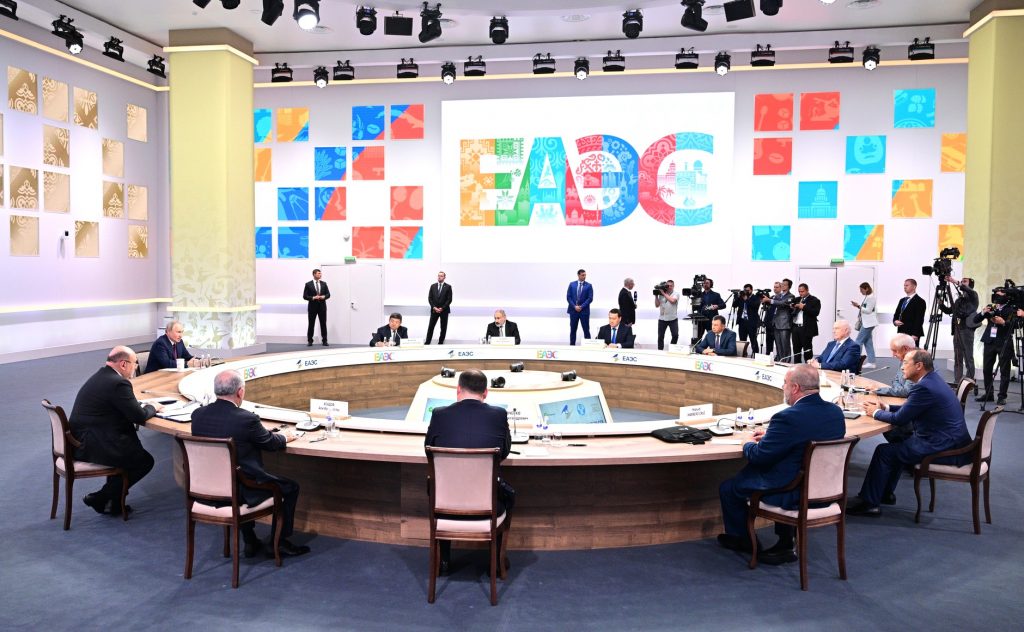
On Friday, June 9, Vladimir Putin met with heads of foreign delegations taking part in meetings of the Eurasian Intergovernmental Council and the Council of Heads of Government of the Commonwealth of Independent States in Sochi. During the meeting, the results of the meeting of the Eurasian Intergovernmental Council, the Council of Heads of Government of the Commonwealth of Independent States, as well as the plenary session of the Eurasian Congress, were summed up.
Key theses:
• Putin “Let me stress that the governments of our states are facing enormous, complex tasks to promote the processes of integration construction in the economic, social and humanitarian spheres.”
• Putin: “It is necessary to increase industrial cooperation more energetically and create new joint ventures, including under the common trade mark “Made in Evrazes”. Nobody has anything against it if it is under the general brand “Made in the CIS”. It doesn’t matter; the main thing is that effective interaction develops in all our countries. As I have already said, such a brand or such brands must become recognisable and popular with consumers in all our countries.”
• Putin: “I have said many times and would like to repeat in this circle: we certainly are not going to fence ourselves off from anyone, from the world economy, especially from promising centres for developing the world economy. This does not mean we must always produce everything at home at any cost – our plans have nothing of the kind. We will strive and, of course, remain a significant part of the global economy as a whole. But in critical areas, of course, it would be better, I say so carefully, for us to be independent because self-sufficiency is the basis of sovereignty.”
• Mishustin: “Separately, I would like to inform you that the Agreement on Mutual Recognition of Documents on Academic Degrees in the Eurasian Economic Union was signed. It removes restrictions on the mobility of highly qualified personnel. Such specialists will be able to find work in any of our countries and conduct professional activities there.”
• Mishustin: “The main thing we are now focusing on is the achievement of technological sovereignty. Colleagues share this approach. We pay a lot of attention to solving related issues, among other things, to substituting foreign products and launching joint ventures in strategic industries.”
• Mishustin: “Within the framework of the EAEU, we are also stepping up efforts on the digital track, taking measures to increase the share of mutual settlements in national currencies and expanding the possibilities of using national payment systems.”
• Mishustin: “Let me congratulate my colleagues: the Agreement on Free Trade in Services and Investments has been signed. This is the most important step. The document has been developed for more than ten years, and now its implementation will open up additional opportunities for business and for our people.”
• Zhaparov: “Both in the 20th and 21st centuries, Sochi has been and is the centre of decision-making, at least, I hope so.”
• Zhaparov: “An important event was the signing of the Agreement on Free Trade in Services, Establishment, Activities and Investments during the CIS meeting, which has been worked out over the past ten years.”
Outcomes and outlook:
Recently, Russia has been increasingly demonstrating the strengthening of integration at the regional level, as well as its own participation in these processes. In contrast, the maximum break in economic and diplomatic relations with the West is also demonstrated, accompanied by regular statements about the benefits for the Russian economy.
It is worth noting that Russia has indeed achieved significant results in reorienting its own economy to new markets and systems of relations with China, India, as well as the states of Central Asia and the Middle East. There is also a significant emphasis on developing new logistics routes, particularly the North-South trade route.
At the same time, it is important to note that the level of the Russian economy, in comparison with other members of such associations as the BRICS or the SCO, remains too low to warm up the leading positions in the decision-making system. A completely different situation can be observed in the format of interaction at the level of the EAEU and the CIS, but in this case, it is essential to take into account the dependence of the majority of members of these organisations on external factors (first of all, we are talking about China’s influence on the states of Central Asia, as well as the presence of transnational corporations and interests of a number of Western states).
Russia’s main trump card remains the chairmanship of the EAEU, which Moscow assumed in early 2023. Apparently, this factor is used by Putin to demonstrate his position on the public plane. In this situation, it is essential to note that next year the chairmanship will pass to Armenia, with which Putin is currently trying to restore closer cooperation, but the factor of Russian influence, at least in public space, will certainly decrease. At the same time, in 2024, Russia will assume the chairmanship of the CIS, which is also an important factor influencing the processes in the organisation. The statements of the Russian president about the need to manufacture products under the conditional brand “made in the CIS” demonstrates Putin’s serious ambitions for this association.
- Meeting of Vladimir Putin with the Prime Minister of Armenia Nikol Pashinyan
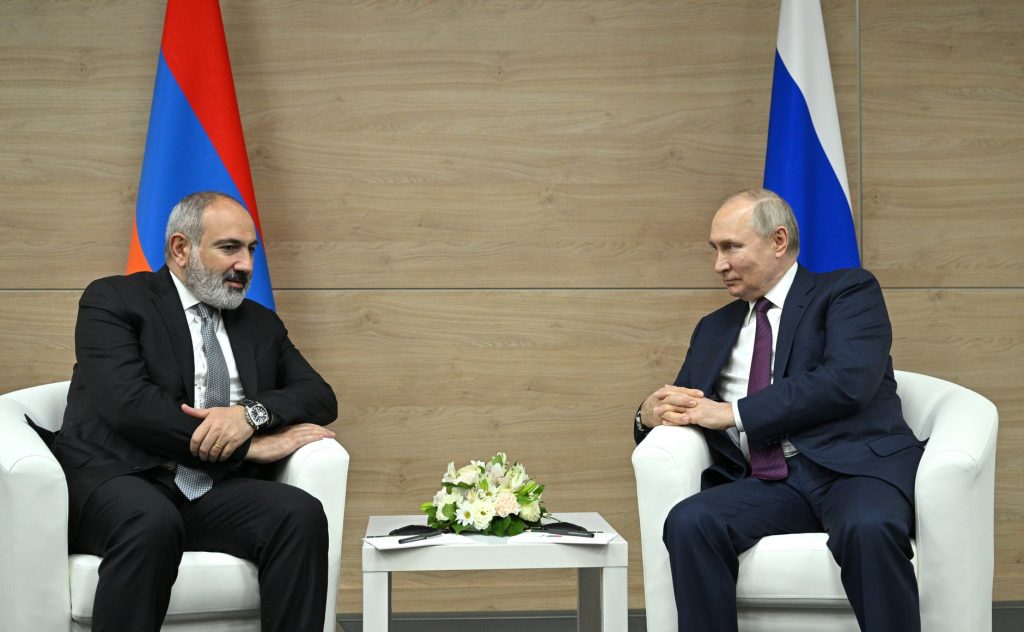
On Friday, June 9, after the meeting with the heads of government of the CIS and EAEU states, Vladimir Putin and Prime Minister of Armenia Nikol Pashinyan held a separate conversation, during which the leaders of Russia and Armenia discussed the situation in Nagorno-Karabakh, as well as the process of peaceful settlement of the conflict between Armenia and Azerbaijan. The meeting itself was held behind closed doors. At the same time, Nikol Pashinyan managed to announce the main issues for further discussion.
Key theses:
• Pashinyan: “Today, we will also discuss the situation in the zone of responsibility of Russian peacekeepers in Nagorno-Karabakh. Unfortunately, the humanitarian situation there remains tense. There has been no gas or electricity in Nagorno-Karabakh for several months. The situation in the Lachin corridor remains rather tense. By the way, I must emphasise that now food deliveries to Nagorno-Karabakh are carried out with the help of Russian peacekeepers, and this is a limited amount of food. The humanitarian crisis in Nagorno-Karabakh continues, and this is also a significant issue. I’m sure we’ll discuss it today.”
Outcomes and outlook:
It is worth noting that on May 24-25, Moscow hosted the EAEU summit, during which Vladimir Putin held separate talks with the leaders of Armenia and Azerbaijan and a trilateral meeting between Putin Aliyev and Pashinyan. It is noteworthy that even during the public part of the EAEU summit, there was a verbal skirmish between Azerbaijani President Ilham Aliyev and Armenian Prime Minister Nikol Pashinyan, as a result of which Pashinyan actually accused Putin that Russia and Azerbaijan had reached certain agreements regarding Nagorno-Karabakh, which did not were agreed with the Armenian side. Tension in relations was also noted during further negotiations.
At the same time, following the results of the trilateral meeting, it was decided to hold a meeting at the level of the heads of international departments of the three states to resolve all inaccuracies. Apparently, a separate meeting between Putin and Pashinyan in Sochi was held to eliminate misunderstandings at the highest level.
It is important to note that recently, Putin has been making more and more attempts to return the peaceful settlement of the Armenian-Azerbaijani conflict under his control. It is worth noting that on February 18, 2023, on the sidelines of the Munich Security Conference, a meeting was held between Aliyev and Pashinyan, during which the parties announced that they had reached agreements on Nagorno-Karabakh. This process was organised without the participation of Russia and caused serious concern in the Kremlin.
At present, Putin is trying in every possible way to demonstrate his effectiveness in the peaceful settlement of the situation in the South Caucasus, levelling the merits of the West. Active participation in negotiations with Baku and Yerevan apparently allows him to achieve the desired result. At the same time, one should not expect that the final settlement of the conflict will take place in the near future. Despite some agreements being reached, there are still many open questions in the relations between the two sides of the conflict.
- Putin’s answer to a question about the situation in the war zone on the territory of Ukraine
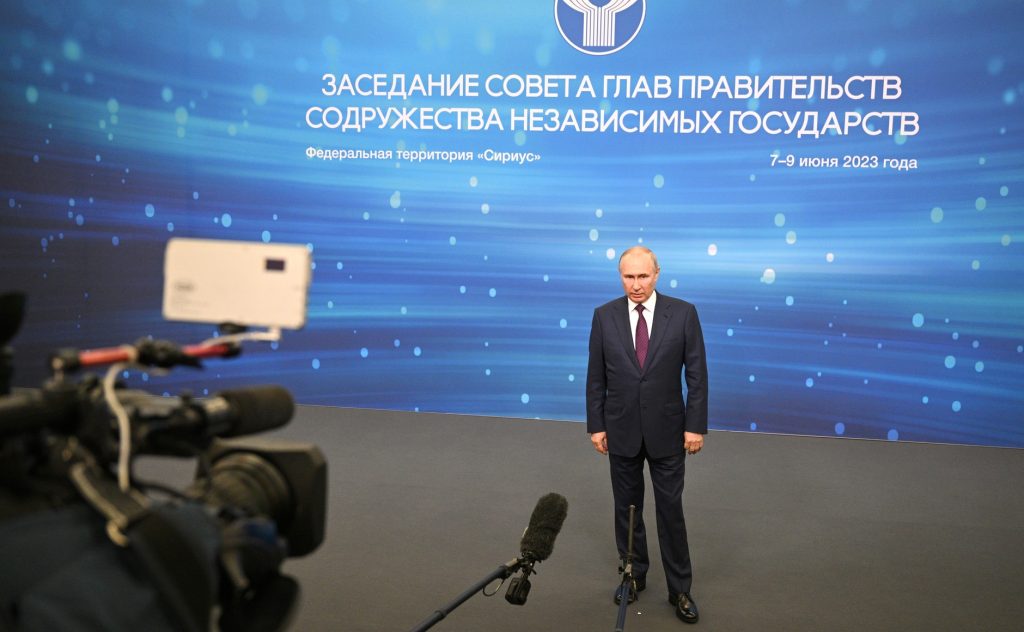
On Friday, June 9, after meetings with the heads of government of the CIS and EAEU states, as well as talks with Prime Minister of Armenia Nikol Pashinyan, Vladimir Putin had a short conversation with journalists, during which he answered a question about the situation in the war zone on the territory of Ukraine.
Key theses:
- Question from journalists: “Yesterday, there was a lot of news from the front. The Chief of the General Staff [Valery Gerasimov] and the Minister of Defense [Sergei Shoigu] also reported. Can we say that the Ukrainian counteroffensive has bogged down, and we managed to neutralise the offensive potential of the Kyiv regime?”
- Putin: “Firstly, it can be stated with absolute certainty that this offensive has begun. The use of the strategic reserves of the Ukrainian army evidences this.”
- Putin: “Yes, we still do not have enough of these modern weapons, but the defence industry, the country’s military-industrial complex, is developing rapidly, and – I’m sure – all the tasks facing the “defence industry” will undoubtedly be solved. There is an intensive increase in the production of modern types of weapons.
- Putin: “Over the past few days, we have seen significant losses of troops of the “Ukrainian regime”. It is known that during offensive operations, losses of about three to one are classic. But in this case, it significantly exceeds the classical indicators. I won’t reproduce those numbers now, but they are impressive.”
- Putin: “I want to note that this tragedy is happening because of the events that took place in previous years, and the responsibility for this tragedy lies entirely with the current “Kyiv regime”, whose primary source of power is the “coup d’état”, which took place in Ukraine in 2014.”
- Putin: “As for the fact that the offensive bogged down, no. In any case, it can be stated that all counteroffensive attempts made so far have failed. But the offensive potential of the “Kyiv regime” troops is still preserved.”
Outcomes and outlook:
The key message in Putin’s statement was the start of the Ukrainian counteroffensive, which, according to statements by several Western media, encountered certain difficulties and did not show the expected result. In fact, the counteroffensive itself was announced by everyone except Ukraine itself.
In such a case, Putin’s statement may be important in several aspects simultaneously. Firstly, for the domestic consumer, the topic of the counteroffensive of the Armed Forces of Ukraine is presented from the position of Ukraine’s aggression against Russian territory (according to the legislation of the Russian Federation, the temporarily occupied territories of Ukraine are part of Russia). Of course, this aspect does not make any sense for Ukraine or the West, but it can serve as an additional unifying factor among the domestic audience. It is possible that shortly, in foreign policy, Russia will try to build on the position of the victim, which is faced with the aggression of the entire NATO bloc.
Secondly, after a long silence on the topic of military operations on the territory of Ukraine, Putin again commented on this issue on a public plane. At the same time, he made it clear that he was unfamiliar with all the details of the so-called “SMO” and fully trusted the reports of Shoigu and Gerasimov. Notably, two days after Putin’s statement, Shoigu’s decree was published on the need to sign an official contract with the RF Ministry of Defense for all volunteer formations in Russia. In the same way, Putin demonstrated his position in the conflict between the military leadership and the curator of the Wagner PMC, Yevgeny Prigozhin.
Thirdly, the regular statements by the Ukrainian side about the upcoming counteroffensive have formed the opinion of many, according to which it will be the final stage of the Russian-Ukrainian war. Allegedly, it will depend on his further assistance to Ukraine from the West and the formation of possible positions in the negotiation process. In fact, by making a public statement about the start of the counteroffensive of the Armed Forces of Ukraine, Putin makes it clear that he is ready for the negotiation process, but not with Ukraine (he once again calls the Ukrainian authorities a “regime”), but with the West, which supposedly will allow avoiding serious losses on the field fight.
- Interview of Sergei Lavrov for the magazine “International Affairs”
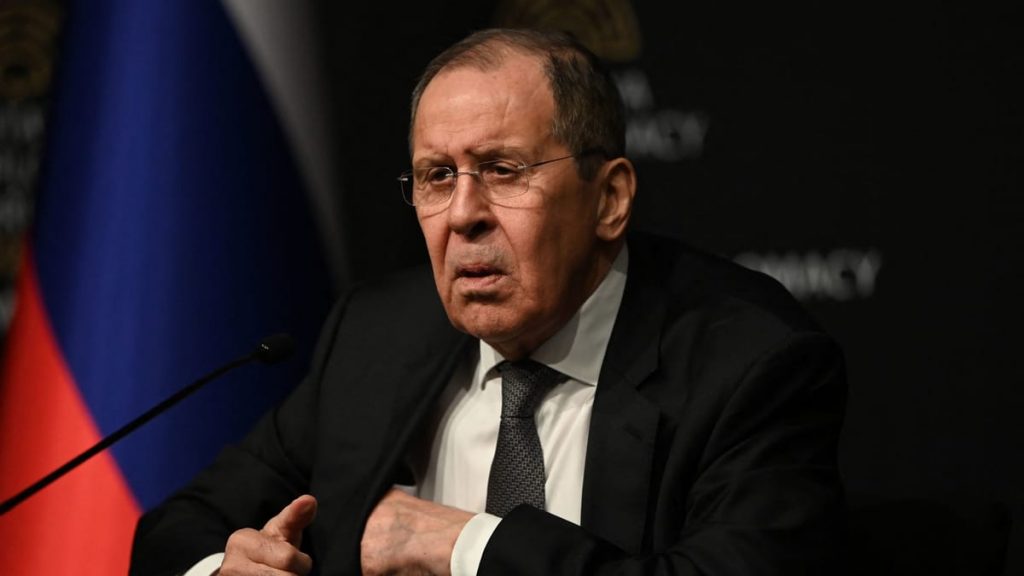
On Friday, June 9, an interview with Russian Foreign Minister Sergei Lavrov was published in the International Affairs magazine. The main question in the interview was about the events around the Kakhovka HPP, as well as the accusations of the Ukrainian side and the international reaction.
Key theses:
- Question: “How would you comment the new portion of the West’s accusations against our country – this time in connection with the explosion of the Kakhovka hydroelectric power station?”.
- Lavrov: “As you know, Western politicians and the media lured by them have long been accusing Russia of, as they say, of all “mortal sins”, without presenting any evidence. Suffice it to recall the so-called. “the case of the Skripals”, the situation around the “poisoning” of A. Navalny, the crash of the Malaysian Boeing, the terrorist attack against the Nord Streams, and the staging of the murder of civilians in Bucha. By the way, regarding Bucha, we have long and more than once asked UN Secretary-General Antonio Guterres to intervene in the situation and ensure that Kyiv publishes the names of those whose bodies were presented by the Ukrainian regime to the world community in early April 2022. The answer is silence.”
- Lavrov: “Now we hear statements in the sense that, they say, it doesn’t matter who blew up the Kakhovka HPP. The only reason this happened was Russia’s “invasion” of Ukraine. They say if it weren’t, then everything would be fine. This is precisely what British Foreign Secretary Cleverley, in particular, said categorically. Regarding the sabotage at the Kakhovka hydroelectric power station, UN Secretary-General António Guterres decided to speak in the same spirit.”
- Lavrov: “At the same time, no one in the West, as well as in the UN Secretariat, remembers that the Ukrainian regime, starting from the summer of 2022, repeatedly fired at hydroelectric power plants using, among other things, the American Hymars MLRS and publicly flaunted by their actions. We officially, last fall, drew the attention of the UN to the declared plans of the Kyiv regime to destroy the Kakhovka HPP. Still, the UN leadership looked around at the West, and the latter ordered not to react.”
- Lavrov: “But even if we follow Western logic in the spirit of “if only”, then nothing that is happening now in Ukraine would have happened if Washington and Brussels had not supported the bloody “coup d’etat” in February 2014 and then brought to power in Kyiv ultranationalists under the slogans of the abolition of the Russian language and the expulsion of Russians from the Crimea.”
- Lavrov: “Western geopolitical engineers prefer not to notice the Nazi essence of the Zelensky regime, which publicly called the inhabitants of Donbas not people, but “creatures”, called on them and all Ukrainians who feel ownership of Russian culture, for the sake of the future of their children and grandchildren, to get out to Russia. In the West, they deliberately turn a blind eye to the misanthropic statements of such figures as Alexander Danilov, Dmitry Kuleba, Alexei Reznikov, and Alexei Arestovich.”
- Lavrov: “In this situation, however, we cannot but be concerned about the very ambiguous position of the UN Secretary-General António Guterres, who plays along with the Westerners regarding the situation in Ukraine. Meanwhile, Mr António Guterres, by virtue of his mandate, should represent the entire international community and not serve the interests of the “golden billion” or act as the custodian, as Josep Borrell put it, of the “Garden of Eden surrounded by jungles.” Why the UN Secretary-General plays these games is completely incomprehensible. We urge António Guterres to look at the UN Charter more often so as not to forget about the terms of his powers and responsibilities.”
Outcomes and outlook:
Moscow’s official reaction to the breach of the Kakhovka hydroelectric dam demonstrates an attempt to form a balanced position, which is opposed to the loud and supposedly groundless accusations of the Ukrainian side. This is not Russia’s first attempt to apply such an approach. At the same time, the vote of the UN Security Council demonstrates that most countries of the world still support Ukraine and do not fall for Russia’s provocations.
At the same time, the Russian side understands that the issue of conducting an objective investigation in the short term remains unlikely. Accordingly, all disputes will take place in the public plane, and their main goal will be forming public opinion around the current situation.
In this context, it is worth noting that recently Russia has significantly intensified the topic of ecology and the need to preserve the environment. In the context of the consequences of the Kakhovka HPP dam failure, Moscow’s public position may be reduced to this topic. In a similar context, proposals will likely be formed on the temporary freezing of the conflict to eliminate the consequences of the flood.
For this purpose, Lavrov forms his main message to the UN Secretary-General António Guterres. It is possible that when Russia submits possible proposals for voting in the UN, Moscow may receive partial support from African states, whose leaders Russia has been actively working with over the past few years.
In any case, it can be stated that, at present, Russia is building a multi-vector position concerning the Russian-Ukrainian war. In this case, both Kyiv and the West should expect new proposals to appear, the main threat of which will be support from Russia’s allies.
- Ukrainian “Counteroffensive”
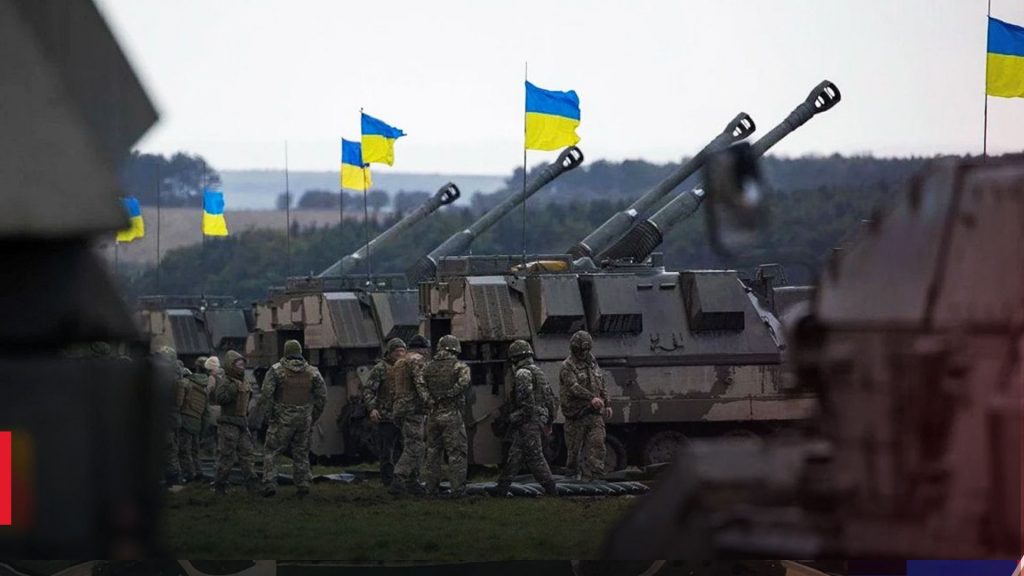
As early as June 4, a significant intensification of hostilities in the Zaporizhzhia direction began to be noted. On Monday, June 5, the attacks of the Ukrainian army continued in two areas – near Velyka Novoselka in the south of Donbas and on the flanks of the Russians near Bakhmut. At the same time, ambiguous information about the beginning of the Ukrainian counteroffensive began to appear in some media outlets. This information was actively discussed throughout the week. Since the most active hostilities took place in the southern direction (Zaporizhzhia Oblast), several military analysts said that the Ukrainian counteroffensive was directed precisely at this sector of the front. At the same time, there were no official statements from the Ukrainian side.
Timeline:
- On Tuesday, June 6, Russian Defense Minister Sergei Shoigu announced the “repulse of the Ukrainian offensive.” In his statement, he noted that “over the past three days, the “Kyiv regime” has carried out the promised offensive on different sectors of the front. An attempt by the Armed Forces of Ukraine on June 4 to advance with the forces of two brigades in five directions was not crowned with success. On June 5, the enemy made new attempts to attack in seven directions with the forces of five brigades but was stopped and suffered significant losses.
- Deputy Minister of Defense of Ukraine Anna Malyar said that “the counteroffensive will not start in social networks” and called on Ukrainians to maintain “information silence.”
- Russian media published a video of what was claimed to be a knocked-out Leopard tank of the Ukrainian Armed Forces. However, later it became known that the video was not a Leopard but a John Deere combined harvester.
- On Wednesday, June 7, The Washington Post, citing sources in the White House, announced the start of a Ukrainian counteroffensive. According to the publication, this happened on Monday – with a blow to the South in several directions. These attacks appear to have been quite successful: “Administration officials were emboldened by better-than-expected successes on Monday when Ukrainian units broke through heavily mined areas and advanced 5-10 kilometres in some sections of the long front. This raised the hope that Ukrainian forces could continue their offensive against Mariupol, Melitopol and other Russian-held locations along the coast, cutting the land corridor.”
- At the same time, Deputy Minister of Defense of Ukraine Anna Malyar said that the Armed Forces of Ukraine advanced 200-1100 meters in different areas near Bakhmut over the past day.
- Several Russian Telegram channels have published statements of large-scale battles and attacks by the Armed Forces of Ukraine in the southern sector of the front in the direction of the land corridor to Crimea.
- Secretary of the National Security and Defense Council of Ukraine Oleksandr Danilov refuted the information about the start of a large-scale counteroffensive of the Armed Forces of Ukraine: “All this is not true. When all this starts, our military will decide. When we launch a counteroffensive, everyone will know about it and see it.”
- On Thursday, June 8, Russian Telegram channels continued the mass publication of messages about a major attack by the Armed Forces of Ukraine in the Zaporizhzhia direction in the area of Orikhiv and Mala Tokmachka. The statements noted that the Ukrainian army “brought the main forces into battle.” The attack was reportedly supported by massive artillery fire and Himars strikes.
- The Russian Ministry of Defense said they hit the Lancet UAV and the German Iris-T anti-aircraft missile launcher.
- During a meeting with the secretaries of the security councils of the CSTO states, President of Belarus Alexander Lukashenko called Ukraine’s counteroffensive “great disinformation”: “There is no “counteroffensive”. This is a lot of misinformation in the media.”
- Hungarian Prime Minister Viktor Orban announced the convening of the country’s defence council because of the situation in Ukraine. He states that “fighting has been going on” since the evening: “A ceasefire and peace would be the most important thing, but from tonight there is fighting in the Ukrainian-Russian war. The Defense Council met at dawn. For us, the security of Hungary is our priority.”
- The Washington Post, citing a Ukrainian military official, stated that the Ukrainian Armed Forces did indeed launch an offensive in the Zaporizhzhia region. Still, it is going hard: “It’s very difficult on the field. Our artillery and aviation are working, but the Russians are also working. It is difficult for them and us. The armed forces are advancing. But not as fast as we would like.”
- Valeriy Shershen, spokesman for the Tavria Defense Forces Press Center, confirmed the “increased activity” in the Zaporizhzhia region: “I’m not saying it’s something important. In the Zaporizhzhia region, Ukrainian forces are generally “still in a defensive operation.”
- Russian Defense Minister Sergei Shoigu said that tonight the Armed Forces of Ukraine went on the offensive in four directions on the front line in the Zaporizhzhia region. He also noted that allegedly Ukrainian troops were stopped in all directions and withdrew with losses.
- BILD military observer Yulian Repke confirmed the beginning of the offensive of the Armed Forces of Ukraine in the Zaporizhzhia Oblast. He came to such conclusions and analysed photos and videos from the battlefield. He says the blow is delivered from under Orekhov to Pologi, Tokmak and Vasilievka – “exactly where everyone expected.” Also, referring to his own data, he noted that the Armed Forces of Ukraine launched powerful missile and air strikes on Tokmok, Melitopol and Pologi at night.
- Deputy Minister of Defense of Ukraine Anna Malyar also partially confirmed the beginning of the offensive of the Armed Forces of Ukraine in the south: “Fighting continues for Bolshaya Novoselka in the Novopalovsky direction. The enemy is on active defence in the Zaporizhia direction in the Orikhiv area.
- CNN, citing two senior US officials, reported that the Ukrainian Armed Forces suffered losses in heavy equipment and soldiers as they faced stronger-than-expected resistance from Russian troops in the first attempt to break through Russian positions in the country’s east in recent days. A US official called the losses, including US-supplied MRAP armoured personnel carriers, “significant,” according to the channel.
- Bild military observer Julian Röpke said that during today’s offensive south of Orekhov, the Armed Forces of Ukraine used German Leopard-2 tanks for the first time. According to the expert, this fact proves that today’s attack was not reconnaissance in force, but the beginning of a full-scale counteroffensive, since Kyiv had not brought them into battle before.
- The General Staff of the Armed Forces of Ukraine denied the reports of the American media, which wrote with reference to unnamed Ukrainian officials and the military, about the beginning of the counteroffensive of the Ukrainian army.
- Chief of the General Staff of the Russian Armed Forces Valery Gerasimov reported the results of the night battle in the Zaporizhzhia direction to Vladimir Putin. The report mentioned the words of the commander of the Russian Armed Forces grouping in the Zaporizhzhia direction, Colonel-General Alexander Romanchuk, that the Armed Forces of Ukraine lost more than 30 tanks at night when trying to attack, including 3 Leopards.
- The New York Times published an article claiming that Ukrainian forces launched a major offensive in the south of the Zaporizhzhia region on Thursday night. The publication reports that the Ukrainian army went on the offensive on two fronts in an operation with high stakes for Kyiv and its Western allies.
- Ukrainian Defense Minister Oleksiy Reznikov said that if Russia reconsiders its publicly declared goals of invading Ukraine, then a “zone of possible agreement” may appear: “Everyone was told very simply: if you are talking about mediation or facilitation, then the rule of any mediator, facilitator, a mediator is first to fix, identify the interests of the parties. And the interest of the Russians was voiced in the so-called “SMO”. This is “denazification”, “demilitarisation”, and “denaturation” that is, in fact, to wipe the Ukrainian nation off the face of the earth because supposedly, from their point of view, we do not exist. So I say, you first identify the interest of the Russians. Has it changed for them? If it has changed, then the so-called. ZOPA – zone of possible agreement – becomes clear, and if not, then stay in line; we will somehow figure it out without you. Let them go first.”
- On Friday, June 9, BILD military observer Yulian Repke confirmed the authenticity of the video of the defeat of the Iris-T anti-aircraft missile launcher during the offensive of the Ukrainian Armed Forces in the Zaporizhzhia region. According to him, the Armed Forces of Ukraine lost the German air defence system, which cost 17 million euros, having made a “series of fatal mistakes”: 1. The air defence system was put forward too close to the front line, only 26 km away. It ended up within a 40-kilometre range of the Russian Lancet strike drone. 2. The complex intended for Egypt was not repainted, retaining a light pattern for camouflage in the desert. 3. The radar was turned off at the Iris-T complex, and additional protection, for example, using the Gepard air defence system, was not provided.
- Russian media reported shelling a recreation centre on the Arbat Spit near Henichesk. Journalists also argued that British long-range Storm Shadow missiles carried out the shelling.
- BILD military observer Yulian Röpke said that the Ukrainian Armed Forces lost two Leopard 2 tanks and 13 Bradley infantry fighting vehicles in one day during their first strikes in the Zaporizhzhia direction.
- Answering questions about the conduct of hostilities on the territory of Ukraine, Vladimir Putin announced the beginning of the Ukrainian offensive: “We can say for sure that the Ukrainian offensive has begun; the use of strategic reserves evidences this.” He also stated that “the Armed Forces of Ukraine have not achieved their goals in any sector” of the front, and “all the counteroffensive attempts made so far have failed.”
Outcomes and outlook:
At present, the so-called Ukrainian counteroffensive, which everyone but Ukraine itself is talking about, raises many questions and demonstrates many inconsistencies. The Russian side speaks the most about the counteroffensive itself. The Western media actively support her statements. On the other hand, Ukraine continues to publish regular videos with uncomplicated allusions to something that should surprise everyone but cannot be talked about. Under such conditions, we can say that the counteroffensive has begun in the information plane since all parties to the conflict have already confirmed this.
At the same time, positional battles on the front line and a demonstration of the destroyed enemy equipment are nothing new for the public space. Similar news was published throughout the war, although now it is happening with particular excitement.
Apparently, it can be stated that over the past week, Russia has tried to seize control of the information agenda completely. The regular announcements of the imminent start of the counteroffensive, sounding from the Ukrainian side over the past months, have been replaced by regular statements from the Russian side about the beginning of heavy fighting, which is precisely the counteroffensive.
In this case, the confusion of the Western media is noted, which either declares large losses of equipment and manpower on both sides and then returns to the opinion that nothing supernatural is happening on the front line.
Apparently, in the near future, we will witness an increase in hostilities, primarily in the information space, a distinctive feature of the post-truth and information wars era. The results of the counteroffensive itself, as well as its conduct, will depend on the results. The presence of situational victories in the form of the destruction of several tanks and infantry fighting vehicles of the Ukrainian army by the RF Armed Forces made it possible to produce a huge amount of propaganda materials. At the same time, by the end of the week, it became known that the Russian military had lost control over several settlements in the Zaporizhzhia and Donetsk regions. In the context of the ongoing dynamics, Russian propagandists may claim that no counteroffensive was carried out.
- Undermining the ammonia pipeline Togliatti-Odesa
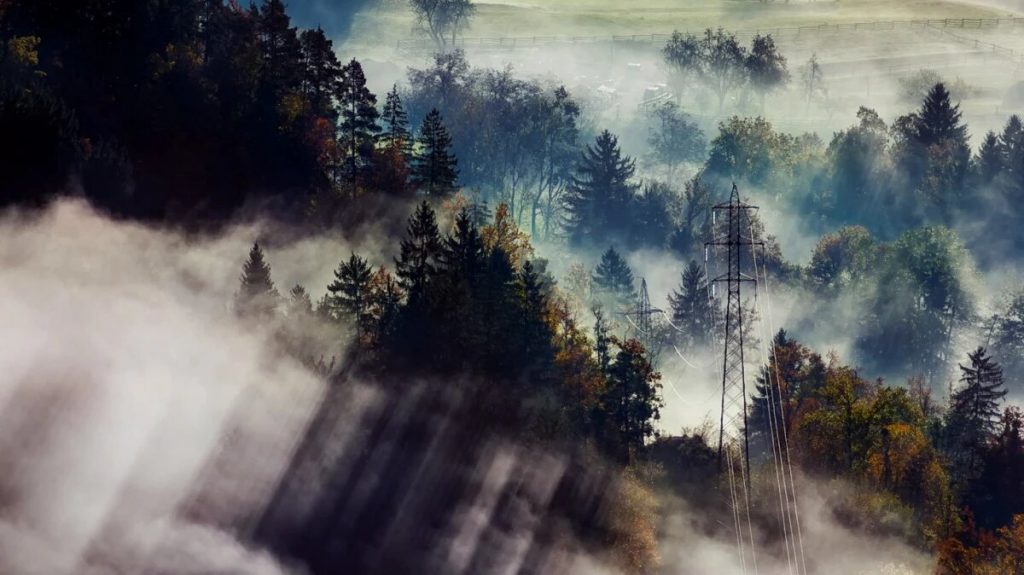
On Wednesday, June 7, information appeared about the shelling of the section of the Togliatti-Odesa ammonia pipeline located in the Kharkiv region. Despite the appearance of a similar statement last week, in this case, a video was published confirming the presence of a large cloud emanating from the pipeline. The very next day, the Russian side confirmed that this ammonia pipeline had received critical damage and was no longer considered for transporting raw materials to the port of Odesa. It is important to note that the resumption of operation of the Togliatti-Odesa ammonia pipeline was one of the main conditions for the Russian side to extend the “grain deal”.
Timeline:
- On Tuesday, June 6, the head of the Kharkiv Oblast administration, Oleg Sinegubov, reported another attack on the Togliatti-Odesa ammonia pipeline.
- On Wednesday, June 7, Russian media published a video of what is said to be a toxic cloud after the explosion of the Togliatti-Odesa ammonia pipeline near the village of Masyutovka, Kharkiv region.
- The Ministry of Defense of the Russian Federation accused the Ukrainian side of a new explosion of the Togliatti-Odesa ammonia pipeline near Kupyansk. The statement noted that Ukrainian saboteurs allegedly did this.
- On Thursday, Putin’s spokesman Dmitry Peskov said the explosion of the Togliatti-Odesa ammonia pipeline in the Kharkiv region “complicates the situation with the grain deal.”
- Later, Russian Deputy Prime Minister Denis Manturov informed that Russia no longer plans to export ammonia through the blown-up Togliatti-Odesa ammonia pipeline but instead plans to build a terminal in Taman (Krasnodar Territory): “We went a little differently – this is the organisation of a terminal in Taman. I was there recently with an inspection; I was convinced that today the organisation of the construction of the terminal for the shipment of ammonia is on time. We expect to complete all construction work and commission our facilities by the end of this year.”
Outcomes and outlook:
The Russian side has recently put forward the launch of the Togliatti-Odesa ammonia pipeline as the main condition for the extension of the Black Sea Grain Initiative (“grain deal”). Undoubtedly, its undermining and the Russian side’s statement about the impossibility of its further use for pumping ammonia poses a serious threat to the “grain deal” itself.
At the same time, several Western analysts have repeatedly said that the extension of the “grain deal” is of strategic importance for the Russian side, as it allows it to control all cargo that goes to Ukrainian ports.
At the same time, one gets the impression that the blowing up of the ammonia pipeline itself and further statements by the Russian side about the impossibility of using it are only an element of blackmail on the part of Moscow. Denis Manturov’s statement about the construction of a terminal for the supply of ammonia in Taman may indeed indicate a decision to redirect logistics routes, protecting them from such sabotage, but such an approach will require considerable time.
According to Ascolta’s sources, Dmitry Mazepin, one of the main beneficiaries of the resumption of the Togliatti-Odessa ammonia pipeline, is counting on the resumption of transit shortly, and he received such guarantees at the highest level. Apparently, soon, we should expect the restoration of the destroyed part of the ammonia pipeline and, accordingly, the resumption of the “grain deal” itself.
- Transfer of Ukrainian prisoners of war to Hungary with the assistance of the Russian Orthodox Church
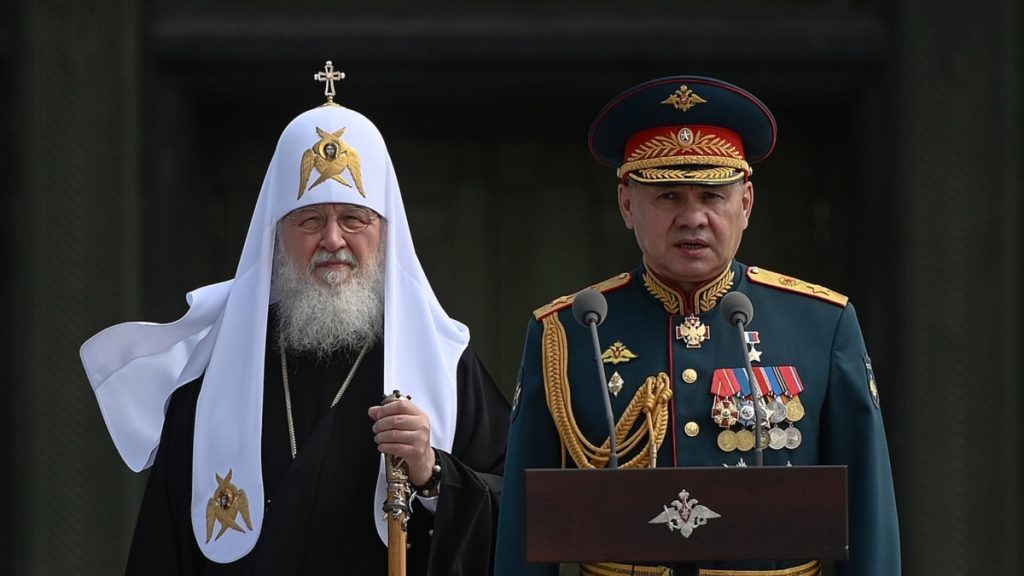
On Thursday, June 8, a group of Ukrainian prisoners of war from Zakarpattia was transferred by Russia to Hungary with the participation of the Russian Orthodox Church. Initially, this information was published on the website of the Russian Orthodox Church and later confirmed by the Hungarian side. It is worth noting that this is the first such case of an exchange of prisoners in this format for the entire period of hostilities.
Timeline:
- On Thursday, June 8, information about the transfer of Ukrainian prisoners of war to the Hungarian side appeared on the website of the Russian Orthodox Church: “On June 8, 2023, as part of inter-church cooperation, at the request of the Hungarian side, a group of Ukrainian prisoners of war of Transcarpathian origin who participated in the hostilities was transferred to Hungary.”
- Hungarian Deputy Prime Minister Zsolt Semjen confirmed that Russia handed them 11 Zakarpattian Hungarians who fought for Ukraine and were captured: “All this is a gesture of the ROC towards Hungary; these people owe their freedom to them.”
- On Saturday, June 10, Andriy Yusov, a representative of the Main Intelligence Directorate of the Ministry of Defense of Ukraine, said that now Ukraine has no information that the transfer of Ukrainian prisoners by the Russian Orthodox Church in Hungary has taken place. In particular, Kyiv does not know whether the military is free.
- The periodical RBC, citing its sources, stated that Russia planned to play the so-called “Hungarian card” to actualise the imaginary problems of allegedly “Transcarpathian separatism”. It is also noted that the Russian Orthodox Church and its Patriarch Kirill allegedly handed over at least 11 Ukrainian prisoners of war to Hungary to restore the church’s lost legitimacy against which extensive international sanctions were imposed.
Outcomes and outlook:
In fact, this precedent not only fully justifies the fears of Ukrainian intelligence about an attempt to strengthen Russian propaganda or activate the positions of the Russian Orthodox Church but also demonstrates very negative trends in Europe, the implementation of which is due to the position of Hungary. In this case, such interaction between the ROC and state structures of one of the European Union’s member states and NATO forms a position according to which the factor of Ukraine as a decision-making party is completely excluded. Of course, this approach is being purposefully promoted by the Russian side.
At the same time, it should be noted that such activities of the ROC are impossible without the approval of the political leadership of the Russian Federation. Earlier, Ascolta wrote about the thaw in relations between Vladimir Putin and Patriarch Kirill, resulting in the icon of Rublev’s “Holy Trinity” being transferred to the Russian Orthodox Church.
Apparently, shortly, the ROC will play a more prominent role in a possible negotiation process between Moscow and Kyiv. It is possible that such a state of affairs may have an impact on the situation with the Ukrainian Orthodox Church.
10. Order of Sergei Shoigu for all the Russian volunteer battalions on signing contracts with the Ministry of Defense
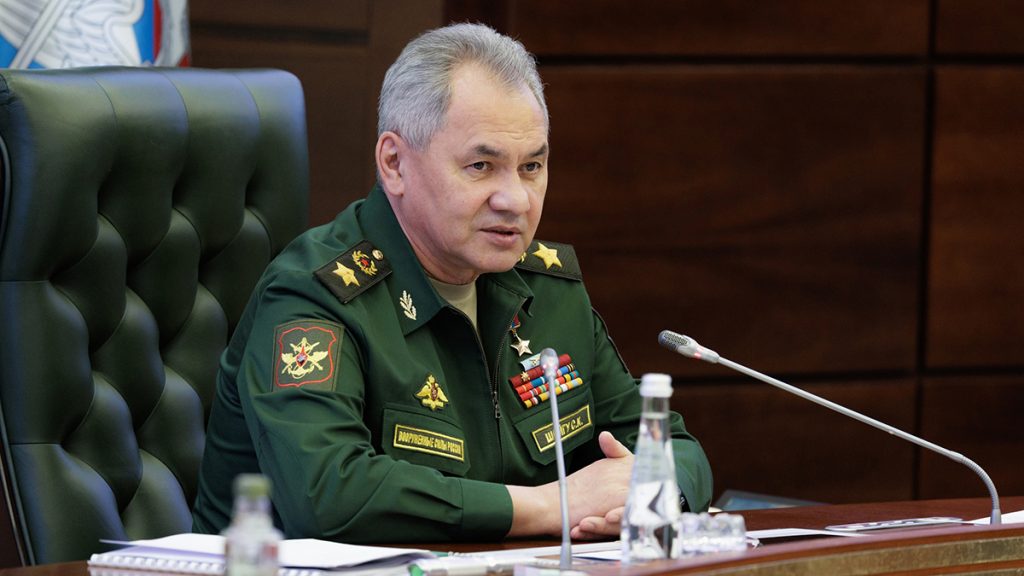
On Sunday, June 11, the order of Russian Defense Minister Sergei Shoigu was published, according to which all “volunteer detachments” of Russia must sign a contract with the Russian Ministry of Defense by July 1. “This will give the volunteer formations the necessary legal status,” the website of the Russian Defense Ministry says. Many analysts perceived this order as another element of the confrontation between the Russian Defense Ministry and the Wagner PMC since such a rule actually subordinates all PMCs to the Ministry of Defense.
At the same time, the curator of Wagner PMC, Yevgeny Prigozhin, reacted to Shoigu’s order, declaring his refusal to sign a contract with the Russian Ministry of Defense: “Those orders and decrees that Shoigu forms, they apply to employees of the Ministry of Defense and military personnel. PMC “Wagner” will not sign any contracts with Shoigu. PMC “Wagner” is organically built into the overall system; PMC “Wagner” coordinates its actions with the generals on the right and left, with unit commanders. What can happen after this order – we will not be given weapons and ammunition – we will figure it out; as they say, when the thunder breaks out, they will come running and bring weapons and ammunition with a request for “help”.
When asked to whom the Wagner PMC reports, and Prigozhin himself, he replied that the Supreme Commander of the Russian Federation (that is, Putin): “Fully subordinate to the Supreme Commander. On the territory, according to the orders of Gerasimov and Shoigu, Wagner PMC coordinates all its actions and performs the tasks set by the General of the Army, Surovikin.
Outcomes and outlook:
Of course, this order of Shoigu can be considered the next confrontation stage between the Russian Federation’s military leadership and Yevgeny Prigozhin. At the same time, the answer of Prigozhin himself indicates that Putin personally should put an end to this conflict.
At the same time, it is important to note the statement of the Russian President, made on June 9, while answering a question to journalists about the course of hostilities on the territory of Ukraine. In fact, Putin made it clear that despite several frank failures of the military leadership of the Russian Federation, he still trusts Shoigu and Gerasimov.
At the same time, it is important to note that one of the main tasks of Wagner PMC is not to conduct military operations on the territory of Ukraine but to protect strategic facilities (oil fields, gold mines and other similar facilities) on the territory of African states. The absence of an official status for PMCs allows Russia to declare the absence of its regular army on the territory of third countries. In this context, it can be predicted that such a state of affairs will not change PMCs’ legal status in connection with Shoigu’s order.
Nevertheless, this order will make it possible to regulate the activities of other PMCs and military formations that are actively being created in Russia. In particular, we are talking about PMC “Konvoy” Sergei Aksyonov. In fact, we are talking about an attempt by the state to get a tool to regulate the process of creating pocket armies. This approach will avoid the threat of the creation of PMCs by Russian oligarchs, who are increasingly demonstrating disagreement with the Kremlin.
